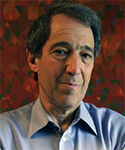Daniel Freedman
Bio
Daniel Freedman received the B.A. from Wesleyan University in 1960, the M.S. and Ph.D. in physics from the University of Wisconsin in 1962 and 64. Raymond Sawyer was his thesis advisor. Freedman held postdoctoral appointments at Imperial College, U.C. Berkeley and Princeton before joining the faculty at the Institute of Theoretical Physics at SUNY Stony Brook. In 1980 he joined the MIT faculty in applied mathematics, and has been jointly appointed with the MIT theoretical physics faculty since 2001. Professor Freedman's research is in quantum field theory, quantum gravity, and string theory, with an emphasis on the role of supersymmetry. During the last two years the focus has shifted to the computation and properties of on-shell amplitudes in supersymmetric theories. A former Sloan and twice Guggenheim fellow, Professor Freedman received the Dirac Medal and Prize in 1993, and gave the 2002 Andrejewski Lectures in Mathematical Physics. In 2006 Professor Freedman received the Dannie Heineman Prize (with Sergio Ferrara & Peter Van Nieuwenhuizen) "for constructing supergravity, the first supersymmetric extension of Einstein's theory of general relativity, ...." Professor Freedman was also recognized as a distinguished alumni fellow by the Physics Department at the University of Wisconsin-Madison in 2006. In 2986, he was named Fellow of the American Academy of Arts & Sciences and of the American Physical Society. In 2021, he was elected Member of the National Academy of Sciences.

